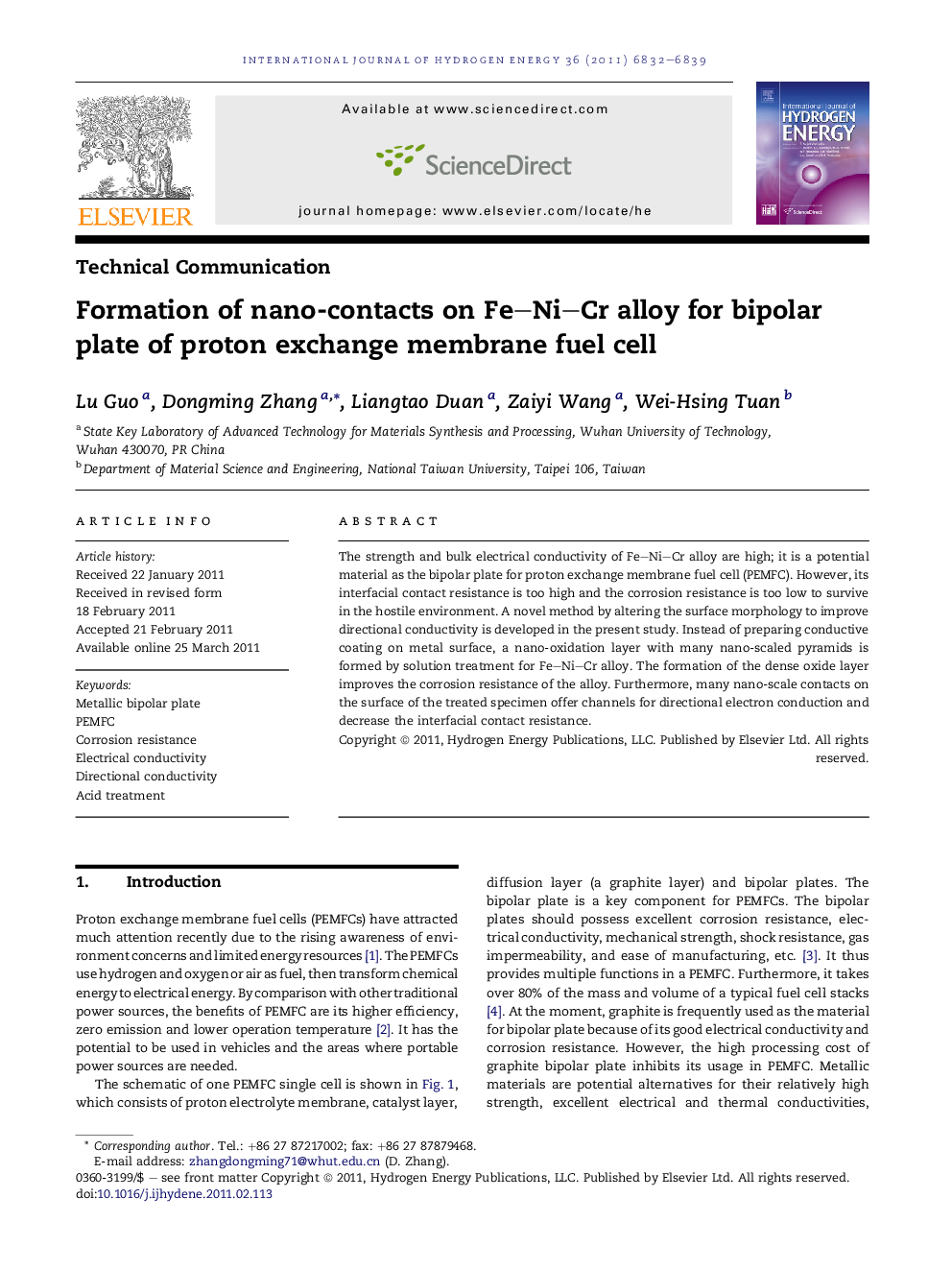| Article ID | Journal | Published Year | Pages | File Type |
|---|---|---|---|---|
| 1276042 | International Journal of Hydrogen Energy | 2011 | 8 Pages |
The strength and bulk electrical conductivity of Fe–Ni–Cr alloy are high; it is a potential material as the bipolar plate for proton exchange membrane fuel cell (PEMFC). However, its interfacial contact resistance is too high and the corrosion resistance is too low to survive in the hostile environment. A novel method by altering the surface morphology to improve directional conductivity is developed in the present study. Instead of preparing conductive coating on metal surface, a nano-oxidation layer with many nano-scaled pyramids is formed by solution treatment for Fe–Ni–Cr alloy. The formation of the dense oxide layer improves the corrosion resistance of the alloy. Furthermore, many nano-scale contacts on the surface of the treated specimen offer channels for directional electron conduction and decrease the interfacial contact resistance.
